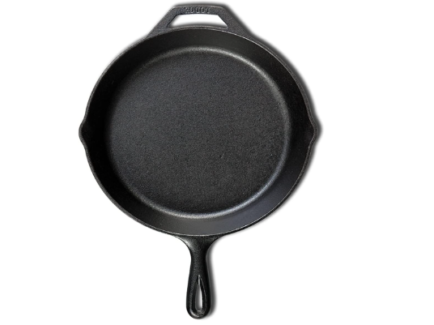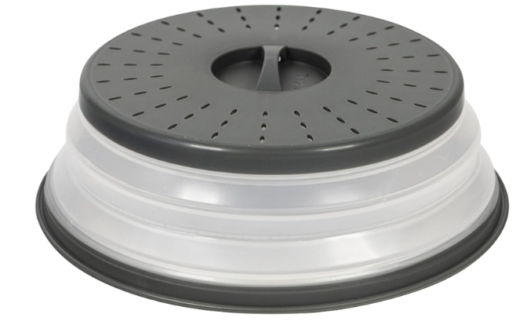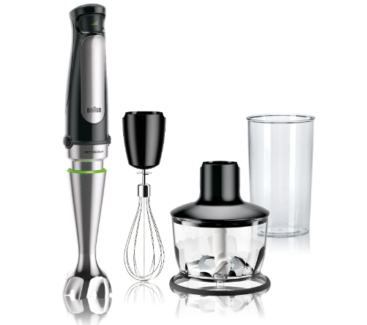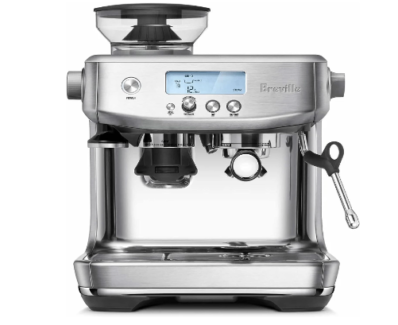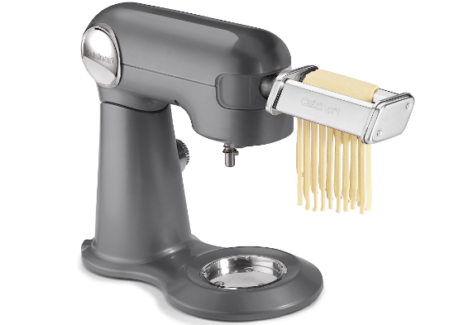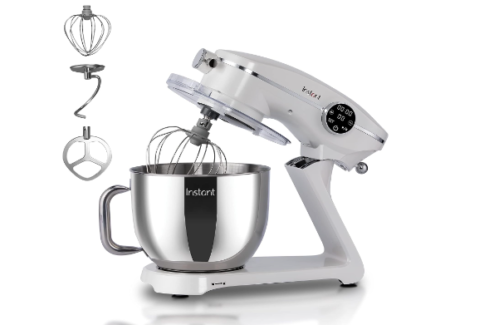A stand mixer is a versatile kitchen appliance that can...
Read More
Croissant dough is a delicate, laminated dough that requires precision and patience to make. One of the best tools to use for making croissant dough is a stand mixer, which can make the process easier and more efficient. A stand mixer can help you mix and knead the dough thoroughly and consistently, saving you time and effort.
With the right attachments and settings, a stand mixer can also help you achieve the perfect texture and consistency for your croissant dough. In this introduction, we will explore the benefits of using a stand mixer for croissant dough and how it can make the process of making croissants more enjoyable and successful.
Can I knead croissant dough in a stand mixer?
Yes, you can knead croissant dough in a stand mixer. After the dough has been mixed and rested, you can attach the dough hook attachment to your stand mixer and knead the dough on low to medium speed for several minutes until it becomes smooth and elastic.
It’s important not to over-knead the dough, as this can result in tough, chewy croissants. You should stop kneading as soon as the dough is smooth and elastic, which should take around 5-7 minutes.
Kneading croissant dough in a stand mixer can be a convenient and efficient way to achieve the desired texture without putting in the physical effort of kneading by hand. However, if you prefer the tactile experience of kneading by hand, that is also a viable option.
Do you need a spiral mixer to make croissants?
No, you do not need a spiral mixer to make croissants. While spiral mixers are commonly used in professional bakeries for making croissant dough, home bakers can achieve excellent results using a stand mixer or even by mixing the dough by hand. A spiral mixer is designed to handle larger quantities of dough and has a gentle mixing action that helps develop gluten without overworking the dough.
However, a stand mixer can also do a good job of mixing croissant dough, especially if it has a dough hook attachment and variable speed settings. The most important factor in making croissants is the technique of laminating the dough with butter, not the type of mixer used to make the dough.
What mixing method is used for croissants?
The mixing method used for croissants is called the “indirect” or “detrempe” method. This involves mixing together the flour, water, milk, sugar, salt, and yeast to create a dough called the “detrempe.” The detrempe is then chilled in the refrigerator for several hours or overnight, which allows the gluten to relax and the yeast to develop.
Once the detrempe is chilled, it is rolled out into a rectangle and a block of butter is placed in the center. The dough is then folded over the butter to encase it completely, and then rolled out and folded multiple times in a process called “laminating.” This creates layers of butter and dough, which gives croissants their flaky, buttery texture.
During the mixing process, it is important not to overwork the dough as this can result in tough, dense croissants. The goal is to develop the gluten just enough to give the dough structure, but not so much that it becomes tough. This is achieved by mixing the ingredients just until they are combined and then allowing the dough to rest and relax in the refrigerator before rolling it out and laminating it with butter.
Why is my croissant dough so hard to roll?
There could be a few reasons why your croissant dough is hard to roll:
- The dough is too cold: If the dough is too cold, it will be difficult to roll out because the butter inside the dough will be too hard. It’s important to let the dough warm up slightly at room temperature before rolling it out.
- The dough is too dry: If the dough is too dry, it will be stiff and difficult to roll out. Make sure you are measuring your ingredients accurately and adding enough liquid to the dough.
- The dough has been overworked: Overworking the dough can cause it to become tough and resistant to rolling. Be careful not to over-mix the dough during the mixing process and avoid rolling the dough too thin during lamination.
- The butter is too hard: If the butter inside the dough is too hard, it will be difficult to roll out. Try letting the dough warm up slightly at room temperature or using a rolling pin to gently pound the butter to soften it.
- The dough has not been rested enough: Resting the dough in the refrigerator is important to allow the gluten to relax and the yeast to develop. If the dough has not been rested long enough, it may be difficult to roll out.
Can you use a stand mixer instead of a pastry blender?
Yes, you can use a stand mixer instead of a pastry blender to cut butter into flour when making pastry dough. To do so, simply attach the paddle attachment to your stand mixer, add the butter and flour to the mixing bowl, and mix on low speed until the butter is evenly distributed and the mixture looks like coarse sand.
However, it’s important not to over-mix the dough, as this can cause the butter to become too incorporated and lead to tough, dense pastry. It’s a good idea to check the mixture frequently and stop mixing once you see the desired texture, which should look like small, pea-sized clumps of butter and flour.
Using a pastry blender by hand can give you more control over the texture of the dough, but a stand mixer can be a convenient alternative for those who prefer to use a machine.
What is the best stand mixer for croissant dough?
Choosing the best stand mixer for croissant dough depends on various factors such as motor power, speed settings, bowl capacity, and durability. Some of the top-rated stand mixers for making croissant dough include:
- KitchenAid Artisan Series 5-Quart Tilt-Head Stand Mixer: This mixer is known for its powerful motor, wide range of speed settings, and durable construction. It also comes with a variety of attachments that can be useful for making different types of dough, including a dough hook for kneading.
- Cuisinart SM-50TQ Stand Mixer: This mixer has a powerful motor and a large, 5.5-quart bowl capacity that can handle large batches of croissant dough. It also has a unique fold setting that can be useful for gently incorporating ingredients into the dough.
- Hamilton Beach 63325 6-Speed Stand Mixer: This mixer is a more affordable option that still offers plenty of power and versatility. It has six different speed settings and a unique mixing head that can spin in both directions for thorough mixing and kneading.
Ultimately, the best stand mixer for croissant dough will depend on your specific needs and preferences. Consider factors such as motor power, speed settings, bowl capacity, and price when making your decision.
Benefits of using stand mixer for croissant dough
There are several benefits of using a stand mixer for croissant dough:
- Time-saving: Using a stand mixer can save you a lot of time and effort when making croissant dough. Mixing the dough by hand can be a long and tiring process, but a stand mixer can mix the ingredients quickly and efficiently.
- Consistency: Using a stand mixer can help you achieve consistent results every time you make croissant dough. The mixer can ensure that all the ingredients are evenly mixed, which can help you achieve the desired texture and flavor.
- Easy to use: Stand mixers are easy to use and can be operated with the push of a button. This can be especially helpful for those who may not have the strength or dexterity to mix the dough by hand.
- Hands-free: A stand mixer allows you to mix the dough hands-free, which gives you more time to focus on other tasks like rolling out the dough or preparing the butter block.
- Versatility: Stand mixers are versatile and can be used for a variety of tasks in addition to mixing croissant dough. This can make it a valuable investment for those who enjoy baking and cooking.
What is the difference between croissant dough and another dough?
Croissant dough is a laminated dough, which means it is made by layering butter and dough together to create a flaky, layered texture. This is in contrast to other doughs, such as bread dough, which are not laminated.
The main differences between croissant dough and other doughs are the ingredients and the preparation method. Croissant dough typically contains flour, water, yeast, sugar, salt, and butter, while bread dough may contain additional ingredients such as milk, eggs, or sugar. Croissant dough also requires a specific process of layering the dough and butter, which is called “laminating”, while bread dough is usually mixed and kneaded before being shaped and baked.
Croissant dough also has a unique texture and flavor due to the layering of butter and dough. When baked, the butter melts and creates pockets of steam, which cause the dough to rise and become flaky and crispy.
Overall, croissant dough is a specialized type of dough that requires a different set of techniques and ingredients to achieve its unique texture and flavor.
How to use stand mixer for croissant dough
Here are the steps to use a stand mixer for croissant dough:
- Add the flour, sugar, salt, and yeast into the bowl of the stand mixer. Mix the dry ingredients briefly using a dough hook attachment.
- Add the wet ingredients such as water or milk, eggs, and butter to the dry mixture.
- Mix the ingredients on low speed for 1-2 minutes until the ingredients are combined.
- Increase the speed of the mixer to medium and knead the dough for 5-7 minutes. The dough should be smooth and elastic at this point.
- Once the dough is kneaded, transfer it to a lightly floured surface and shape it into a ball.
- Cover the dough with a plastic wrap or a damp kitchen towel and let it rest for 30 minutes to an hour.
- After resting, roll out the dough on a floured surface to the desired thickness and shape.
- Cut the dough into triangles or other desired shapes, and then shape them into croissants by rolling them into the traditional crescent shape.
- Let the shaped croissants rest for another 30 minutes to an hour to rise.
- Bake the croissants at the appropriate temperature and time, as per the recipe instructions.
Using a stand mixer can save you time and effort when making croissant dough, as it will do most of the kneading work for you. However, it’s important to monitor the dough and not over-knead it, as this can lead to tough, chewy croissants.
How do you know if croissant dough is kneaded enough?
To know if croissant dough is kneaded enough, you need to look for a few key signs:
- Smooth texture: The dough should be smooth and free of lumps, bumps, or dry patches. It should have a silky, elastic texture when you touch it.
- Elasticity: When you gently pull on the dough, it should stretch without breaking easily. This indicates that the gluten in the dough has developed properly, which is important for achieving the flaky, layered texture of croissants.
- Windowpane test: You can also perform the windowpane test to check if the dough is kneaded enough. Take a small piece of dough and stretch it between your fingers. If the dough stretches thinly enough to let light pass through without tearing, it means the gluten has developed properly.
Generally, croissant dough should be kneaded for around 5-7 minutes in a stand mixer, but the exact time can vary depending on the recipe and the specific mixer used. It’s important not to over-knead the dough, as this can lead to tough, chewy croissants.
How thick should croissant dough be before rolling?
Before rolling out croissant dough, it should be rolled into a thin rectangular sheet that is about 1/8 inch (3 mm) thick. This thin layer of dough allows for the formation of many layers during the rolling and folding process, which ultimately leads to the characteristic flaky and airy texture of croissants. It’s important to ensure that the dough is rolled evenly to the desired thickness, as uneven thickness can lead to uneven baking and texture.
How many times should you fold croissant dough?
Croissant dough requires multiple folds to create the layers that give croissants their distinctive flaky texture. Generally, croissant dough is folded 3-4 times in a specific manner to create the layers. The process of folding is also known as “laminating.”
The exact number of folds can vary depending on the recipe and the baker’s preference, but typically 3-4 folds are enough to create the desired number of layers. Each fold should be done carefully to ensure that the layers are even and the dough is not overworked. Overworking the dough can result in tough croissants, so it’s important to handle the dough gently during the folding process.
After the final fold, the croissant dough is rolled out and shaped into croissants, then left to rise before baking.
Factors to consider when choosing the best stand mixer for croissant dough
When choosing a stand mixer for croissant dough, here are some factors to consider:
- Power: Croissant dough is a thick and dense dough, so you’ll need a mixer with enough power to handle it. Look for a mixer with at least 350 watts of power or more.
- Speed settings: A mixer with multiple speed settings is ideal, as croissant dough requires both slow and fast speeds during mixing.
- Bowl size: The bowl size of the mixer is also important, as croissant dough requires a large bowl to accommodate the dough as it rises. Look for a mixer with a bowl capacity of at least 5-6 quarts.
- Dough hook attachment: The dough hook attachment is essential for kneading the dough properly. Make sure the mixer comes with a good quality dough hook that is strong enough to handle the dough.
- Durability: Croissant dough requires a lot of kneading and mixing, so choose a mixer that is built to last. Look for mixers made of sturdy materials such as metal, and with strong motors that can handle heavy loads.
- Brand reputation: Look for mixers from reputable brands known for their quality and reliability. Check online reviews and ratings to see what other users have to say about the mixer’s performance and durability.
- Price: Stand mixers can range in price from a few hundred to a few thousand dollars, so choose a mixer that fits your budget. Keep in mind that a higher price tag doesn’t always mean better performance or durability, so consider all the other factors before making a decision.
How to clean stand mixer for croissant dough
To clean a stand mixer after making croissant dough, follow these steps:
- Unplug the mixer and detach all the attachments from the mixer.
- Wipe down the mixer and all attachments with a clean, damp cloth to remove any excess dough or flour.
- For any stubborn dough or flour, use a toothbrush or pastry brush to gently scrub the areas.
- Remove the bowl from the mixer and wash it with warm soapy water. You can also put it in the dishwasher if it’s dishwasher safe.
- Use a clean, dry cloth to wipe down the bowl and all attachments.
- Dry all the attachments and bowl thoroughly with a clean towel or allow them to air dry completely.
- Store the mixer and all attachments in a dry, clean place.
It’s important to clean the mixer and attachments after every use to ensure their longevity and to prevent any buildup of bacteria or contaminants.
How to maintain stand mixer for croissant dough properly
Here are some tips on how to properly maintain your stand mixer for croissant dough:
- Regular Cleaning: Clean your stand mixer and attachments after every use to prevent any buildup of dough or flour. This will also help prevent any bacteria or contaminants from forming.
- Lubrication: Lubricate your stand mixer’s moving parts with food-grade grease or oil every six months. This will help ensure smooth operation and prevent any wear and tear.
- Check and Replace Parts: Regularly check the condition of the mixer’s parts, such as the gears and motor, and replace any parts that are worn out or damaged.
- Proper Storage: Store your stand mixer and attachments in a dry, clean place, away from any moisture or dust. Cover your mixer with a cloth or plastic cover to prevent dust from accumulating.
- Use Proper Speeds: Use the proper speed setting on your mixer when making croissant dough. High speed can overwork the dough, while low speed may not provide enough power to knead the dough properly.
By following these tips, you can help prolong the life of your stand mixer and ensure it works properly every time you use it for croissant dough.
Troubleshooting about stand mixer croissant dough
Here are some troubleshooting tips for stand mixer croissant dough:
- Dough is Too Sticky: If your dough is too sticky, it may be due to over-hydration or over-kneading. To fix this, add a small amount of flour and knead the dough briefly until it reaches the right consistency.
- Dough is Too Dry: If your dough is too dry, it may not have enough moisture to form the layers needed for flaky croissants. To fix this, add a small amount of water or milk and knead the dough briefly until it reaches the right consistency.
- Dough is Tearing: If your dough is tearing, it may be too dry or too cold. Allow the dough to rest at room temperature for a few minutes and then try again. You may also need to adjust the hydration or kneading time.
- Dough is Not Rising: If your dough is not rising properly, it may be due to improper temperature or insufficient yeast. Ensure that the dough is rising in a warm, draft-free area, and that the yeast is fresh and active.
- Croissants are Dense: If your croissants are dense instead of flaky, it may be due to over-kneading or over-handling the dough. Handle the dough gently and avoid overworking it to achieve the desired texture.
By following these troubleshooting tips, you can help ensure that your stand mixer croissant dough turns out perfectly every time.
Conclusion
In conclusion, using a stand mixer can be a great option for making croissant dough. It allows for efficient and consistent mixing and kneading of the dough, which can save time and effort compared to hand mixing. When choosing a stand mixer for croissant dough, consider factors such as motor power, speed settings, and bowl capacity. Proper maintenance and cleaning of the stand mixer can help ensure its longevity and effectiveness.
To make croissant dough using a stand mixer, follow the appropriate mixing and kneading methods for the recipe, ensuring that the dough is properly hydrated and kneaded to the appropriate level of elasticity. Proper folding and shaping techniques during the rolling and folding process are also important to achieve the desired flaky and airy texture. With practice and attention to detail, stand mixer croissant dough can result in delicious, buttery croissants that are sure to impress.
Related Posts
What is the best stand mixer for pasta dough?
A stand mixer is a versatile kitchen appliance that can...
Read MoreBest Stand Mixer for Bread Dough
Baking bread from scratch can be a rewarding experience, but...
Read MoreWhy Trust Us
You will find what you are looking for at Jody's Bakery. From classic to luxury brands, you'll find both. We will help you to select appliances that fit your needs, budget and lifestyle. Whether you want to stop by to learn more — or plan to make a major purchase — we’ll treat you like family and assist you every step of the way. Shop with us today to receive friendly and experienced help along the way.





















